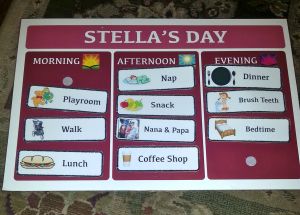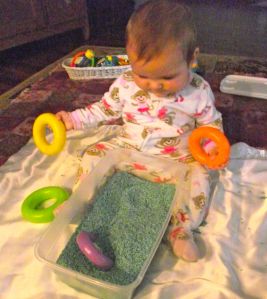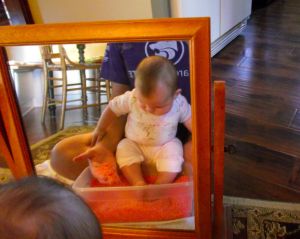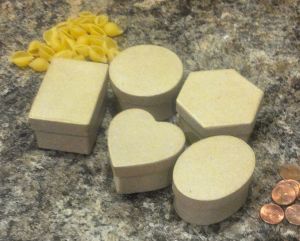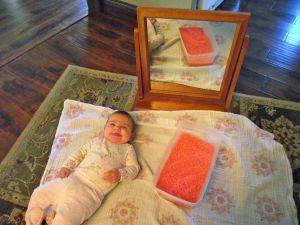“Our lives begin to end the day we become silent about things that matter.” -Martin Luther King, Jr.
I have a strong opinion on spanking. It’s something that matters to me. I have been meaning to write a post about it but have been putting it off because I know it’s a highly controversial parenting practice and, to be honest, I’ve been afraid of how people would respond. Too often, I stay silent about things that matter to me because I don’t like to argue or upset anyone. With yesterday being Martin Luther King, Jr. Day, I saw the above quote multiple times and made a pact with myself to be more vocal about “things that matter.” I decided it’s time to put my fear of being ridiculed aside and advocate for kids like my education should compel me to do.
In church last Sunday, (in a sermon totally unrelated to spanking) my pastor mentioned that when he used to be a youth pastor, their goal was to “scare the hell” out of the kids. They would have them watch videos, tell them stories, etc. that would basically scare them into believing in God and following His word. He was recalling this practice with an attitude conveying he knew it was no longer considered a useful way to teach children. He said, “It worked.” Then, he held up his hand and spaced his thumb and forefinger about an inch apart, “For about this long,” he said.
“Yes,” I thought. “Exactly.”
We no longer teach with fear anything we expect children to learn. Would you use fear to teach a child to read? What about math? Do you think scaring a child would make him learn his multiplication facts? Is that how you would want to be taught? No, of course not. Had I been taught that way, I would have hated school and resented my teachers.
We expect everything else — reading, math, science, social studies, art, religion — to be taught with kindness, compassion, understanding, patience. This is interesting, because the way we want our children to be taught is also what we expect their behavior to reflect — kindness, compassion, understanding, patience. So why then, when it comes to children’s behavior, do we, the adults, often lash out in a manner that contradicts the very way we actually want our children to behave?
I would argue that people do it because they are simply uneducated and inexperienced in appropriate and effective discipline practices for young children. I think many people spank because it’s how they were disciplined as children and it’s what they know how to do. It’s the “quick and easy” solution; it requires little thought. Do I think parents who spank their kids are mean-spirited? Bad parents? Ruining their children? Of course not. I think most parents who spank genuinely believe they are doing the right thing for their children and I understand that mindset.
But, I also believe, based on evidence-based research and my own education of child development, that there are more effective ways to discipline a child than spanking and that spanking can do more harm than good. Please don’t misunderstand. Discipline is very important. Our society just needs to understand that “discipline” is not synonymous with “spanking.”
I have outlined below some reasons why spanking is an undesirable and ineffective form of discipline:
1. “Spanking” is a euphemism for “hitting.” People call it “spanking” because it justifies the act for them. They are conscious of the fact that calling it “hitting” would sound terrible. It is what it is, no matter how instructive you try to make it sound.
2. Spanking says, “It’s okay to hit.” It’s unreasonable to spank your child, yet expect her to not hit others. Children mimic the behavior you model.
3. Spanking too often leads to abuse. Since spanking does not work to change behavior, parents often feel that since it’s not working, the solution is to spank harder. Continuing with that cycle, spanking or hitting often gets out of control and results in abuse.
4. Spanking teaches compliance through fear, not responsibility — “It’s not wrong if I don’t get caught.”
5. Spanking doesn’t work. It may seem to work in the moment, but the disciplinary effects of spanking are not long term. The emotional effects, however, can be.
Consider this scenario: A five year old child, Johnny, is interacting with another child, Billy, on the playground. Johnny gets upset about something and, because young children lack impulse control, he hits Billy, knocking him to the ground.
Let’s pretend for a moment that Johnny is a child who is disciplined by being spanked. He has learned that certain behaviors are wrong only if an authority figure witnesses them. After hitting Billy then, Johnny quickly looks around, realizes no one saw him do it, and leaves Billy on the ground crying while he runs away to play with something else, happy he didn’t get caught.
Now let’s pretend that Johnny has been disciplined using positive discipline. His parents have talked with him about his actions and emotions and have helped him understand right from wrong. In this case, when Johnny hits Billy, his moral code tells him he has done something wrong. He walks over to Billy, apologizes and helps him up.
The child in the spanking scenario is different from the child in the positive discipline scenario because he doesn’t understand why his actions are wrong. He thinks he has done something wrong only if he gets caught. The child in the positive discipline scenario, while still acting with the lack of impulse control of a five year old, understands his wrongdoing after he hits the other child and makes an effort to correct his behavior.
I think it’s worth repeating — “spanking” is not synonymous with “discipline.” There are many ways to discipline a child that do not include spanking. Here are a few:
1. Use natural and logical consequences. An example of a natural consequence would be, if a child throws a ball over the fence, he doesn’t have the ball to play with anymore. An example of a logical consequence would be, if a child dumps his milk on the floor, he has to help clean it up.
2. For the very young child, redirection works well. A young child cannot relate a punishment, like spanking, to whatever they did to receive the punishment. It doesn’t make sense to them. For example, let’s say a one-year old is playing with something he shouldn’t be. Your best bet is to remove the child from the situation and direct them to something they can play with.
3. Talk about it. Explain to a child what they have done wrong. Give them words for their emotions so they can learn to use words instead of actions. For example, a three year old pushes another child out of anger. You can say to the child, “I can see that you are angry, but it is not okay to push.” Help the child find the words he needs to convey his feelings.
4. Use positive guidance. Instead of constantly punishing a child for doing wrong, notice what she does right. Your children want to please you. Help them know when they are doing so and they will strive toward that kind of behavior more often.
5. Model the behavior you desire. You simply cannot expect your child to display behavior that you, yourself, do not model for him. If you want your child to be kind to others or use a quiet tone of voice or eat their vegetables, you have to first show them what those things look like.
Maybe you agree with me, maybe you don’t. That’s okay. We all have our own personal opinions and I’m not asking you to abandon yours. I’m just asking you to set aside any defensiveness you may feel or emotions you may have surrounding the topic and look at the facts, the research. Don’t take my word for it. Consider the educated opinions of those who have dedicated themselves to researching how a child’s brain works and how a child learns, like Dr. Sears or the American Academy of Pediatrics. I strongly recommend Dr. Sears’ articles, “10 Reasons Not to Hit Your Child” and “Top Ten Discipline Principles.” Also, click here to browse through many other articles on the topic of discipline.
Tell me how you feel about spanking and why you feel the way you do. But, be warned — any reasoning similar to, “I was spanked and I turned out just fine” will be difficult for me to take seriously. Research has come a long way. You don’t paint your home with lead-based paint. You don’t use a drop-side crib. You make your child ride in a car seat. Let’s take the same proactive, educated approach when it comes to discipline.
If you’re still thinking, “Well, I was spanked and I turned out fine,” I’ll leave you with this quote from the American Academy of Pediatrics:
“It is true that many adults who were spanked as children may be well-adjusted and caring people today. However, research has shown that, when compared with children who are not spanked, children who are spanked are more likely to become adults who are depressed, use alcohol, have more anger, hit their own children, hit their spouses, and engage in crime and violence. These adult outcomes make sense because spanking teaches a child that causing others pain is OK if you’re frustrated or want to maintain control—even with those you love. A child is not likely to see the difference between getting spanked from his parents and hitting a sibling or another child when he doesn’t get what he wants” (American Academy of Pediatrics, 2012).
Read the full article here.
Wait…I feel immaturity coming on. I have to say it — I wasn’t spanked and I turned out fine! Okay, now back to adulthood. 😉
Let the comments begin! I’m interested in your opinion.
Note: If you think your discipline may be out of control, click here for a list of signs that you may need help. You may be surprised.


